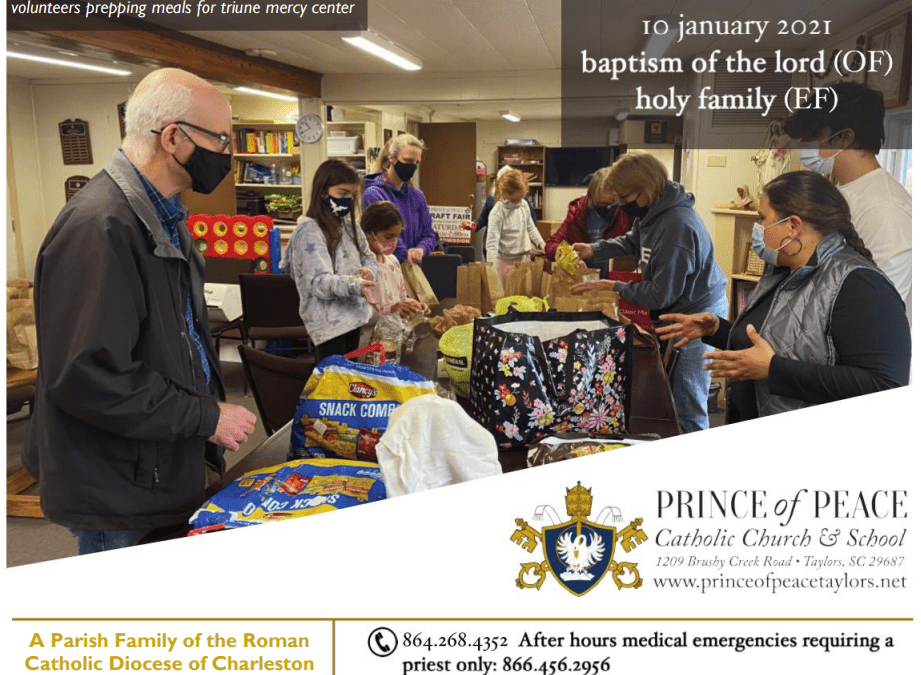
10 January 2021 Bulletin
Click to read this week’s bulletin: 10 January 2021 Bulletin

Click to read this week’s bulletin: 10 January 2021 Bulletin

10 January: The Baptism of the Lord. Today, we celebrate the baptism of Christ in the Jordan by John the Baptist: a milestone event in the life of Jesus, in the Christmas story and in our Christian life. This feast day is usually celebrated on the Sunday after the Feast of the Epiphany. It brings to an end the liturgical season of Christmas. {Christmas is the feast of God’s self-revelation to the Jews, and Epiphany celebrates God’s self-revelation to the Gentiles.} At his Baptism, Christ reveals himself again, this time to repentant sinners. The Baptism of Jesus also marks the first public revelation of all Three Persons in the Holy Trinity, and the official revelation of Jesus as the Son of God to the world by God the Father. Jesus’s baptism is described in all four Gospels and it marks the beginning of his public ministry. “After Jesus was baptized, he came from the water and behold, the heavens were opened [for him], and he saw the Spirit of God descending like a dove [and] coming upon him. And a voice came from the heavens, saying, ‘This is my beloved son, with whom I am well pleased’ ” (Mt 3:16-17).
We know that Jesus, holy and sinless, did not need to be baptized. Yet he humbled himself and submitted to his Father’s will. Jesus’s baptism sanctified the waters and instituted the Sacrament of Baptism. Fr. Antony Kadavil explains: Neither John nor Jesus invented baptism. It had been practiced for centuries among the Jews as a ritual equivalent to our Confession. Until the fall of the Temple in 70 A.D., it was common for Jewish people to use a special pool called a Mikveh – literally a “collection of water” – as a means of spiritual cleansing. Men took this bath weekly on the eve of the Sabbath; women, monthly. Converts were also expected to take this bath before entering Judaism. The Orthodox Jews still retain the rite. John preached that such a bath was a necessary preparation for the cataclysm that would be wrought by the coming Messiah. Jesus transformed this continuing ritual into the one single, definitive act by which we begin our life of Faith. In effect, He fused His Divine Essence with the water and the ceremony. In this humble submission, we see a foreshadowing of the “baptism” of his bloody death upon the cross. Jesus’ baptism by John was the acceptance and the beginning of his mission as God’s suffering Servant. He allowed himself to be numbered among sinners. Jesus submitted himself entirely to his Father’s will. Out of love, He consented to His baptism of death for the remission of our sins.
‘Looking at the events in light of the Cross and Resurrection, the Christian people realised what happened: Jesus loaded the burden of all mankind’s guilt upon His shoulders; he bore it down into the depths of the Jordan. He inaugurated his public activity by stepping into the place of sinners’ (Joseph Ratzinger (Pope Benedict XVI), Jesus of Nazareth).
Ideas for celebrating in your home:
Finally, if you have access to a pool, pond, river or stream: we dare you to take a winter plunge in celebration of Jesus’s baptism in the Jordan!
Recent Comments